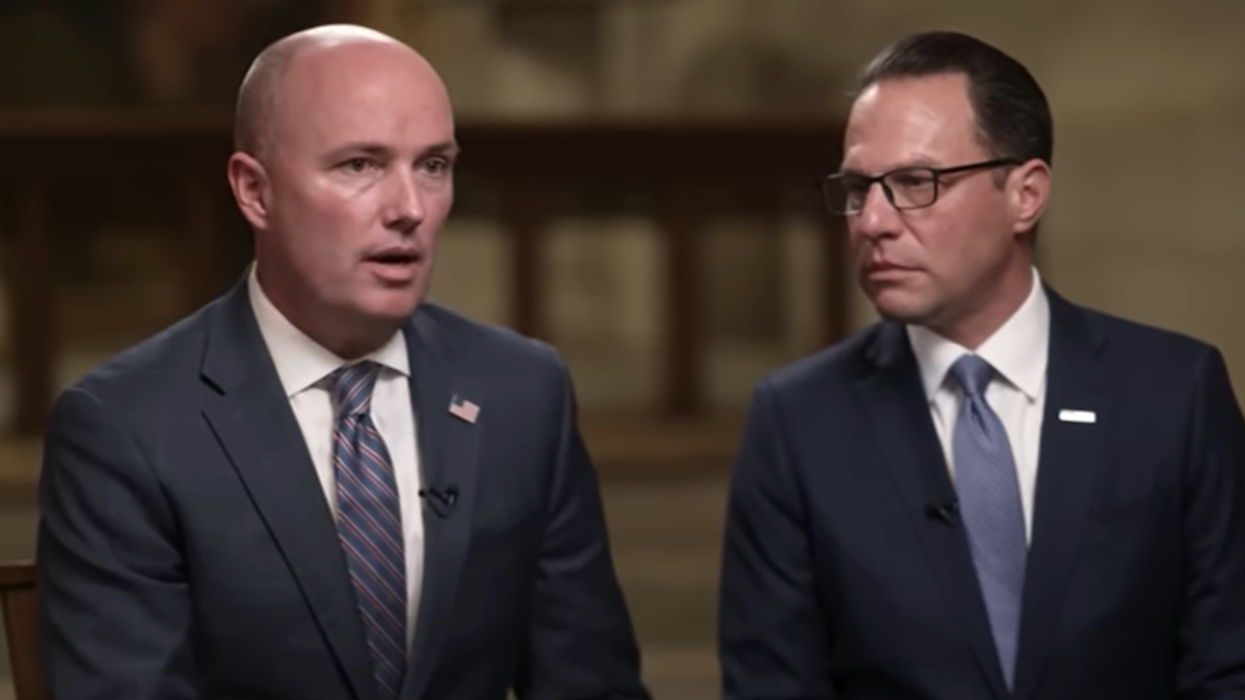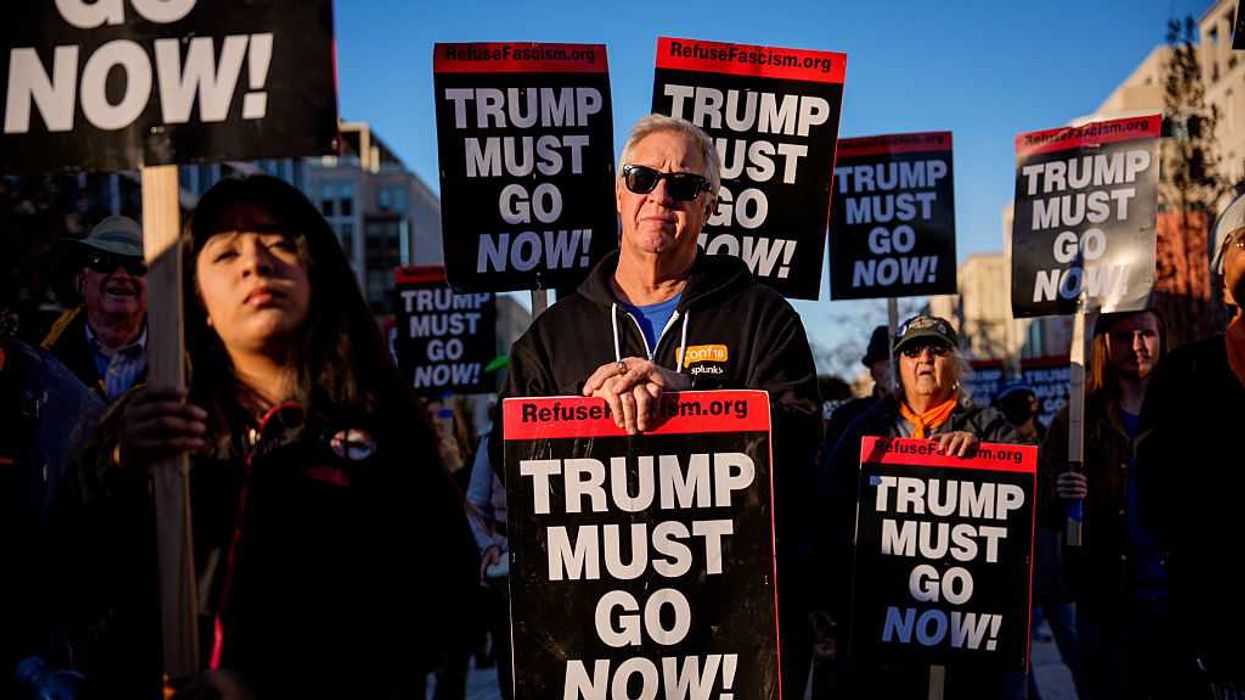PART TWO
The previous article was a critique of the word “polarization”. This article suggests replacements to use instead, the new words “overthreat” and “undertrust.”
The criticisms of the term polarization in the last article covered many dimensions: too many different definitions, an obvious interpretation of ideological differences among the general public that is actually less pervasive than often believed, a suggestion of greater political divisions than exist in reality, and a failure to directly note that Americans have an overblown sense of threat from those in the other political party.
This article recommends two portmanteaus to largely replace polarization: “overthreat” and “undertrust.” Overthreat (overblown + threat) refers to an outsized perception of threat posed by people of another political party, and undertrust (underestimated + trust) refers to a lack of trust of people of different political parties due to an underestimation of factors that support trust. These concepts are closely linked, as overthreat exacerbates undertrust, and undertrust may lay the groundwork for overthreat.
Together, they cover nearly every issue of concern and remove risks of misunderstanding with the term polarization. The opposites of these words also provide clear and inherent direction for solutions to these problems: dethreatening and trust-building.
Still, recognizing no terms are perfect, we address a few potential issues with these proposed words.
Starting with threat, as noted in the previous article, it more directly relates to potentially catastrophic consequences that can destroy America’s system of government, including greater willingness to break democratic norms and condone political violence.
Americans clearly overestimate threats posed by fellow citizens in the other political party. Americans in both main political parties think that those in the other party dehumanize those in one’s own party much more than in reality; also, Americans across the political spectrum are actually much less likely to endorse breaking democratic norms, condone political assault, or seek to win politically at all costs than those in the other party believe. Relevant threats encompass two main types, both realistic (e.g., physical safety, resources) and symbolic (e.g., values, cultural beliefs).
Threats can weaken the core elements of a society with a representative system of government while strengthening the desire for elements destructive to it. In his book, “ Outraged ”, published this January, UNC-Chapel Hill Social Psychology Professor Kurt Gray argues that humans all have a harm-based moral mind. He sees our moral convictions as based on feelings of threat, and writes that “ feelings of threat drive much of our political behavior.” When Americans see those in the other party as threatening, they feel morally justified in taking actions to avoid or fight this perceived threat.
Some responses to a threat can be problematic on an interpersonal level, indirectly leading to negative societal consequences. Intergroup threat theory notes that a group perceiving another group or individual as a threat can lead to increased prejudices and a reduced likelihood of positive interaction between the groups. Both of these are ultimately unhelpful to representative government.
Other reactions to threat relate more directly to societal impacts. According to a 2023 review article associated with the journal Nature, “Contextual threats to safety and security activate authoritarian predispositions.” An overblown sense of cross-partisan dehumanization, political violence, and willingness to win at all costs manifest as threats to safety and security, which increase activation of authoritarian tendencies that undermine core aspects of democratic stability. While less studied and somewhat different than right-wing authoritarianism, left-wing authoritarianism that can be associated with factors like illiberalism shares similarities with its right-wing variant that “reflect a shared constellation of personality traits, cognitive features, beliefs, and motivational values.”
Threat covers all types of polarization, making the term polarization redundant. In addition to threat drivers already mentioned, threat also comes from a sense that people who are morally inferior could have power ( moral polarization); data from the Pew Research Center shows that majorities of Democrats and Republicans incorrectly perceive those in the other party as more dishonest and immoral than they actually are. Perceived ideological polarization is threatening when more seem to have dangerously different ideas than in reality. One who thinks a group is threatening is likely to feel coldly toward them, encompassing affective polarization. Finally, the new prefix “over” in overthreat directly notes false polarization because it is labeled as overblown.
Overthreat usually refers to survey data showing much lower levels of threat posed by fellow Americans across the political spectrum than perceived. At times, entities like an organization or government leaders may act or message in undesirable ways that increase Americans’ perceptions of threat of those entities; in those cases, it can make sense to work with the entities or leaders to change their practices or rhetoric in beneficial ways.
To be clear, not every sense of threat is overblown. It is impossible to empirically know the threat level that a given political leader or administration poses, and high perceptions of threat are sometimes valid and warranted. “Overthreat” should not be grossly misinterpreted as never worrying about potentially damaging actions from governments or leaders.
Next, we turn to trust, which some have called “ the glue of healthy societies.”
Overthreat and undertrust are closely linked. The more one sees a group as threatening, essentially by definition, the less that group is going to be trusted to take positive actions. Greater overthreat leads to deeper undertrust.
Trust can be visualized in two dimensions, horizontal and vertical, and both are relevant when politics is involved. Horizontal trust is between groups of relatively equal power, especially among the American public. A political example includes average Democrats trusting average Republicans, and vice versa. Vertical trust is between institutions and the American public, and between groups when there is some real or perceived power differential.
Regarding horizontal trust, few surveys directly ask about trust between Democrats and Republicans, but various survey data points suggest low levels of trust between those in each party. For instance, Americans vastly underestimate the shares of those in the other party (~90% in reality vs. perceptions of only ~30% of the other party) who think core democratic values, such as the rule of law and representative government, are very or extremely important. This shows a basic lack of trust that those in the other party are even minimally acceptable fellow citizens.
And, in terms of vertical trust, the related concept of confidence in more than a dozen institutions is at historically low levels. Republicans tend to have lower confidence in institutions seen as liberal like higher education, while having greater confidence in sometimes more conservative institutions such as “the church or organized religion.” (Thankfully, this pattern does not always hold, and a majority of Americans across the political spectrum still have at least quite a bit of confidence in small business and the military.)
A form of vertical trust involves confidence in the government, which the same poll registered at 10% or less across the political spectrum. This is the kind of trust that political scientists often focus on, and a recent meta-analysis of this kind of trust in various aspects of government described it as “a vital resource for governments to maintain stability, oil the wheels of policy, and to facilitate a vibrant civil society.” Thus, a lack of trust in government should risk the opposite problems, including instability, policy gridlock, and weak civil society.
Like overthreat, undertrust relates to all existing definitions of polarization, making them superfluous. In the Strengthening Democracy Challenge led by Stanford, social distrust had the greatest correlation with partisan animosity/affective polarization. Perceived ideological polarization likely leads to distrust, sometimes from a sense that if someone is so intellectually inferior (often shortened to “crazy”) to believe such ideas, how could they be trusted? Those seen as morally suspect (moral polarization) are unlikely to be trusted. Finally, the prefix “under” recognizes that the lack of trust is distorted (false polarization).
Building trust provides a positive direction to strive for, in addition to the potentially less exciting goal to reduce a negative of reducing overblown threat.
All of these concerns about trust, along with the potential benefits of increasing it, encouraged James to make trust a main goal/north star for the field, as he wrote in an article for The Fulcrum last June. That article framed goals as adding trust and subtracting factors that diminish it. That framing dovetails with the framework in this article, as it involves adding trust to a current condition of undertrust and subtracting factors that lead to the misperceptions of overthreat.
Some potential issues with trust should be addressed. Vertical trust often comes from institutions taking steps to make themselves trustworthy, not just trying to improve messaging to improve trust. Separately, trust is often measured with a generalized trust statement like, “ most people can be trusted,” but efforts here will be about more particularized trust specific to politics. Thus, a term like “political undertrust” or “cross-partisan undertrust” may appeal to those who want precision.
Luckily, the terms overthreat and undertrust are new, so they can be made to have connotations of politics without explicitly stating it. For instance, a term like the “ perception gap ” is not necessarily about politics, but the field now thinks of it that way.
Both overthreat and undertrust have quite obvious opposites in terms of how to start fixing these problems: dethreatening and trust-building. Dethreatening is a clear replacement for depolarization. Trust-building is a possible addition or replacement to the term bridge-building (but that is a topic for another article).
Choosing to focus on dethreatening and/or trust-building depends on one’s goals and preferences. Someone particularly concerned with catastrophic threats to the country may want to focus on the former, while someone more interested in long-term trust-building may choose to focus on the latter, and they are highly intertwined anyway.
Even the problems with Congress, the one place where ideological “polarization” is an accurate descriptor, should be explained using another term. The primary problem can instead be framed as a lack of correspondence to the ideological preferences of the American public when Congress should be a representative body that reflects the will of the people. Greater correspondence with the preferences of the American public should increase trust. Certain findings from Stanford University Political Scientist Morris Fiorina have been summarized as, “While the leadership and activists among the nation’s two main political parties are deeply polarized, the broader American public is not.” Analysis of Congressional voting shows no ideological liberal-conservative overlap between Republicans and Democrats, while there is still ideological overlap between Republicans and Democrats among the general public. There is not necessarily a term for this lack of alignment, but riffing off of the name of the organization James runs, Congress should be More Like US in the American public in terms of its ideological diversity.
In sum, polarization is a largely unhelpful, confusing term that rarely, if ever, needs to be used. Using overthreat and undertrust instead provides a much clearer direction while encompassing all the original definitions of polarization. With political dethreatening and trust-building, America can not only retain its representative system of government but also hopefully become stronger and more cohesive than it has ever been.
James Coan is the co-founder and executive director of More Like US. Coan can be contacted at James@morelikeus.org
Sara Weinstein is a current intern at More Like US.


















